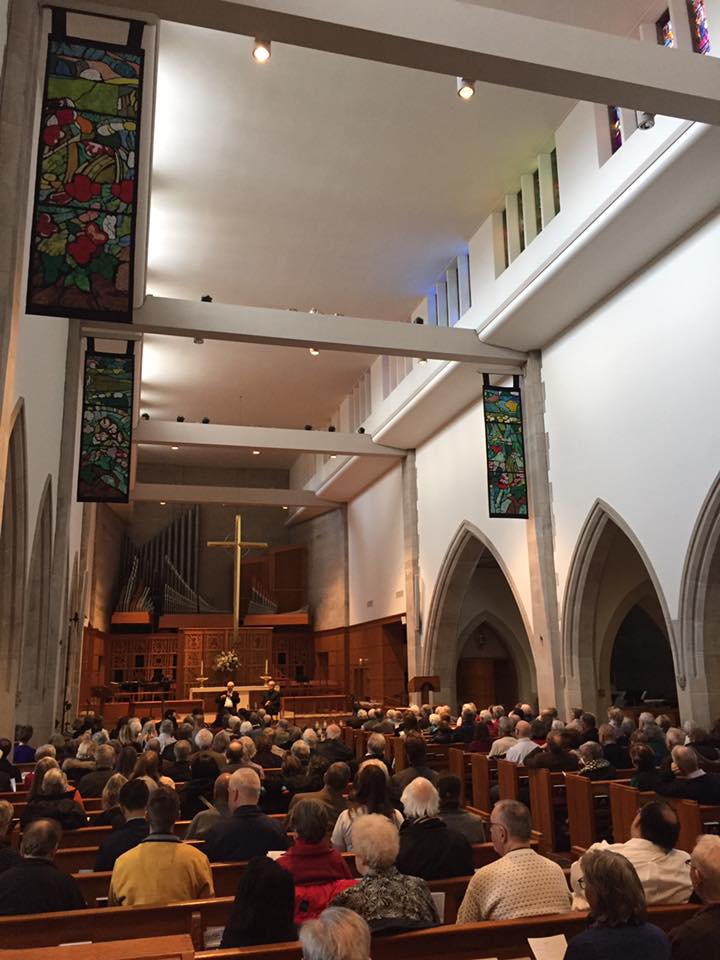by Robert Rollin

Designed for the church, the work derives some of its spatial power from the location of St. Paul’s three organs — in front, in the rear choir loft, and in the transept on stage left. The performance had a ceremonial quality, supported by the location of the instrumental soloists: viola on stage right, clarinet on stage left, and percussion at rear stage right. The vocalists were dispersed throughout the hall. Near the end, the soloists walked gravely from stage to the rear in two symmetrical lines.
Though Labyrinths’ main structural principle is sound mass (the generation of textures in which details are submerged in the sustained flow), Wiley uses coloristic differences to distinguish musical events. The three organs and the Tibetan prayer bowl provided the sustained wash, but ringing, bell-like sounds from vibraphone, and bells carried by the female singers, clarinetist, and violist, created an enchantingly transparent tapestry. The singers projected strongly at times to overlay the texture.
Chance also played an important role. Conductor Alex Popovici, in the rear choir loft, raised numbered signs in sights lines of all performers indicating section order. Even with the aleatoric techniques, the work seemed very organized.
Paukert’s rapid virtuosic cadenza formed the middle section, followed by a short return to the opening material and the soloists’ recessional. The powerful work elicited a standing ovation.
Paukert opened the afternoon with a solo recital. Bach’s substantial Toccata, Adagio and Fugue begins with a fast duple meter replete with virtuosic sixteenth notes. The second section smooths out the edges with eighth note motion, but the sixteenths reappear. After a stately triple-metered Adagio, the syncopated Fugue periodically recalls Toccata themes. The performance was a delight.
Liszt’s Prelude and Fugue on the Name of BACH derives its chromatic Fugue subject from Bach’s initials. The bravura Prelude features many stops and starts and chromatic sequences. Paukert used a charming throaty registration for the more delicate section.
His performance of the short Postlude pour l’Office de Complies by Jehan Alain sparkled, its high, reedy modal melody charmingly separated from the dark, more-muffled accompaniment. Czech composer Petr Eben’s Moto ostinato is in a modernist style but employs shimmering triadic and mediant harmonies. Paukert gave it a graceful rendition.
Photo: Paukert interviewed by Timothy Robson before the premiere of Labyrinths in January, 2017 (credit Nicole Keller).
Published on ClevelandClassical.com October 9, 2017.
Click here for a printable copy of this article




